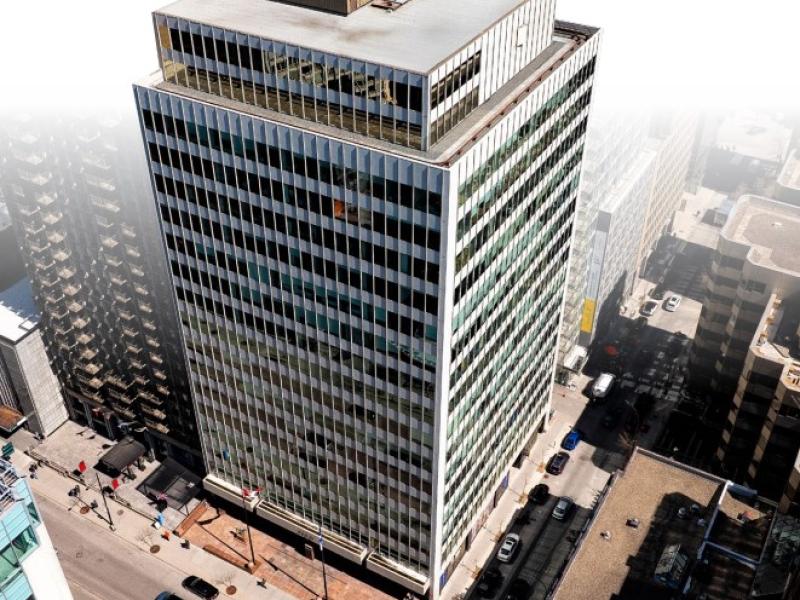
REALPAC chief executive officer Michael Brooks says the MSCI/REALPAC fund index allows investors to compare the performance of Canadian vs. global real estate funds.
Canada’s commercial real estate sector delivered a 7.73 per cent return, and is holding its own internationally, according to the most recent MSCI/REALPAC Canada Quarterly Property Fund Index.
The index, which dates back to 1999, measures unlevered total returns of directly held, standing property investments from one valuation to the next. Its goal is to enhance transparency, enable comparisons of real estate relative to other asset classes, and facilitate comparisons of Canadian real estate performance to other private real estate markets globally.
The index covers unlisted open-end real estate funds operating in Canada and measures investment performance at the property and fund level.
“We’re always challenging ourselves with what role real estate plays in an institutional portfolio,” TD Greystone Asset Management vice-president of real estate investments Matt Sych said during a May 9 webinar about the latest results. “From that standpoint, the core open-ended strategy works well.”
The index is based on funds which include 953 properties with a total net asset value of $33.2 billion.
Direct property return up slightly
The index showed a direct property return of 7.73 per cent in the first quarter, which was up slightly from the final quarter of 2018, according to James Harkness, the executive director of client coverage for MSCI – Real Estate.
The index has shown a direct property return of 9.3 per cent since inception, a 10-year return of 8.1 per cent and a four-year return of 6.6 per cent.
“I do believe that positive returns can continue, as evidenced by the past few years where we’ve been in a more normalized return environment,” said Sych. “We’re certainly not seeing the double-digits that we’ve seen in the past, but that six to eight per cent return number and capital growth is sustainable.”
LaSalle Investment Management director Benjamin Abramov said capital growth has been better than expected and real estate fundamentals have been improving, with the exception of Alberta office assets and some retail segments.
Active management has paid off, as fund managers look more toward the industrial and multi-family asset classes, which have been growing in recent years.
Industrial sector has highest return rate
The industrial sector led the way with a return of 14.1 per cent, followed by residential at 9.8 per cent, office at 5.2 per cent and retail at 3.7 per cent.
“If we looked at the Q4 return for industrial, it was 12.8 per cent,” said Harkness. “So for Q1, going up to 14.1 per cent shows that there’s a demand for industrial.
“The behaviour of cap rates in the industrial sector is driving that very strong capital growth.”
REALPAC chief executive officer Michael Brooks noted retail was the top-performing sector a few years ago, but now trails the pack.
“In every market around the world, you’re seeing retail underperforming and industrial outperforming,” said Bentall Kennedy Prime Canadian Property Fund senior VP Michel Cormier.
Cormier’s fund has reduced the percentage of retail in its portfolio through a combination of dispositions and increasing its stake in other sectors. While he believes retail will continue to face challenges, he said urban mixed-use assets and food-anchored strip centres continue to perform well in terms of occupancy and revenue growth.
“We’re getting to the point where a lot of retail is oversold and underpriced and can become an opportunity. We’re not there yet, but when you look at the patterns and see everybody rushing into these same asset classes at the same time, that may create opportunities in a few years.”
Toronto was the top-performing Canadian market with a return of 10.7 per cent. It was followed by Vancouver at 10.5 per cent, Montreal at 10.1 per cent, Ottawa at 6.3 per cent, the rest of Canada at 5.3 per cent, Edmonton at 4.1 per cent and Calgary at negative 1.1 per cent.
While the Calgary return was negative, it showed some improvement from the fourth quarter, which could mean there’s a bit more stability in the market, according to Harkness.
Development growing in importance
Development accounts for 8.4 per cent of the capital value in the index, and it’s trending slightly upward.
“Developments have absolutely paid off over the last few years, and you’re seeing more and more funds taking on developments as a way to really add value,” said Abramov.
While Cormier said his fund is primarily focused on core income-producing assets, it looks to development to provide flexibility and options in growing the portfolio.
“Although we are a core income-producing fund, we do have property types where we can maximize values through development,” said Sych, who cited increased interest in mixed-use and increasing density in shopping centres and multi-family residential properties.
“We work with best-in-class development managers in each property type and location, which is fundamental to development success. When we talk about construction costs and inflation, having those managers with deep relationships with contractors has certainly paid dividends.
“They’re able to provide that stability and predictability of the work and payments on time. That certainly helps with locking in the trades and having them focus on your projects.”
MSCI Global Property Fund Index
Canadian funds are included in the MSCI Global Property Fund Index, a barometer for private equity real estate globally which compares relative performance indicators.
It shows Canadian funds on the world stage, and Brooks said REALPAC is happy to partner with MSCI because investors can see returns on an apples-to-apples basis anywhere.
“Canadian pension funds and fund managers have been and, more and more, are going global. Money goes around the planet much more than it did 15 or 20 years ago,” Brooks said.
The global direct property return was eight per cent in the fourth quarter of 2018. Harkness said the return rate has been pretty stable for the past 12 quarters and investors appreciate the steady and predictable income derived from commercial real estate.
Hungary, with a 24.5 per cent return rate, led the way. The United States at 7.1 per cent and the United Kingdom at 5.1 per cent ranked behind Canada, which was in the middle of the pack.
“We have come back to average,” said Abramov. “If you look at seven or eight years ago, we were a first quartile performer globally. Returns are down in the majority of the world.
“Canada is one of the few credit-worthy nations out there with good institutional real estate. What differentiates us from everyone else is that we tend to be a very low-risk market from a real estate perspective and other perspectives.
“As investors are looking to diversify, the U.S. and Europe are certainly some of the top markets, but Canada is not too far behind them.”
The latest index was the first in which LaSalle was involved.
Abramov said the company, which has $65 billion in assets under management around the world, participates in various indices to attract investors, provide transparency and lower risk for them.







